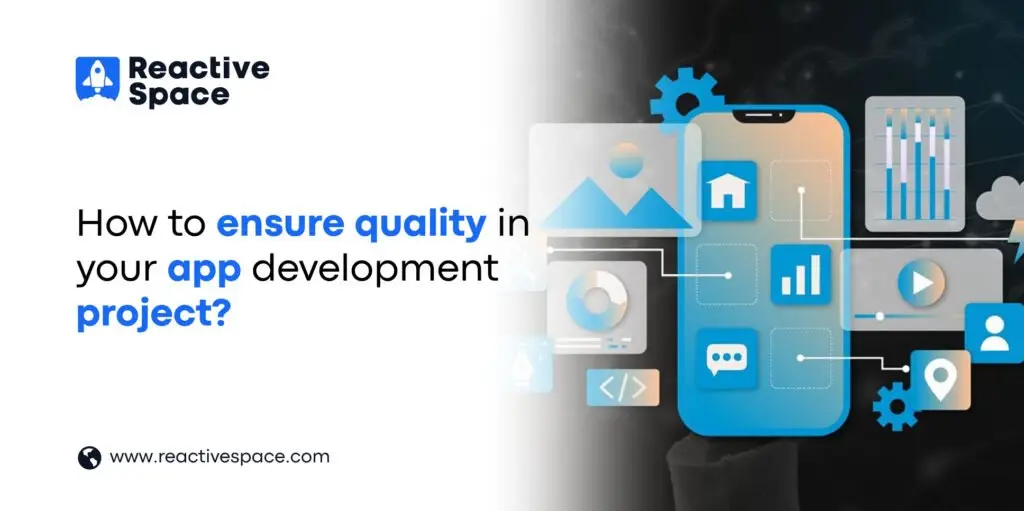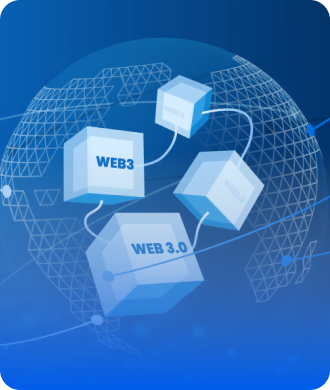
In today’s digital world, where mobile applications have become necessary to our daily lives, ensuring quality in app development is the most important. With countless apps available in the market, users have high expectations for performance, usability, and reliability. Therefore, delivering a high-quality app is crucial for success.
What is Application Development?
Application development refers to the process of creating software applications that serve specific purposes or address needs. It involves designing, coding, testing, and deploying software programs for various platforms such as desktop computers, mobile devices, or web browsers. Application development can range from simple mobile apps for everyday use to complex enterprise-level software systems perfect for specific industries or organizations.
What are the application development services?
Mobile app development services cover a range of activities and offerings aimed at creating, enhancing, and maintaining software applications. These services can be customized to meet the specific needs and objectives of clients across various industries. Some common application development services include:
Custom Application Development:
Building reflecting software solutions customized to the unique requirements of clients. This involves gathering requirements, designing the architecture, coding, testing, and deploying the application.
Mobile App Development:
Creating applications specifically designed for mobile devices such as smartphones and tablets. This includes native app development for iOS and Android platforms, as well as cross-platform development using frameworks like React Native or Flutter.
Web Application Development:
Developing web-based applications accessible through web browsers. This may include e-commerce platforms, content management systems (CMS), customer relationship management (CRM) systems, and more.
Enterprise Application Development:
Designing and implementing software solutions to address the complex needs of large organizations. This may include enterprise resource planning (ERP) systems, human resource management (HRM) systems, and supply chain management (SCM) systems.
Cloud Application Development:
Building applications hosted on cloud computing platforms such as Amazon Web Services (AWS), Microsoft Azure, or Google Cloud Platform (GCP). Cloud-native applications are designed to leverage the scalability, reliability, and flexibility of cloud infrastructure.
Legacy Application Modernization:
Updating and modernizing legacy software systems to improve performance, usability, security, and scalability. This may involve migrating applications to newer platforms, rearchitecting for cloud compatibility, or incorporating new features and technologies.
API Development and Integration:
Creating application programming interfaces (APIs) to enable communication and data exchange between different software systems. API development services may also include integrating third-party APIs into existing applications to enhance functionality.
Quality Assurance and Testing:
Conducting thorough testing and quality assurance to ensure the reliability, security, and performance of applications. This includes functional testing, usability testing, security testing, and performance testing.
Maintenance and Support:
Providing ongoing maintenance, updates, and technical support services to ensure the continued functionality and optimization of applications. This may include bug fixes, feature enhancements, and security patches.
Quality Assurance in App Development Project
Quality assurance (QA) in app development projects is the most important process aimed at ensuring that the software being developed meets specified quality standards and fulfills the requirements and expectations of stakeholders. Here’s an overview of the key aspects of quality assurance in app development:
1. Define Clear Requirements:
Before diving into development, it is required to have a clear understanding of the project requirements. Work closely with stakeholders to gather and document requirements, ensuring they are specific, measurable, achievable, relevant, and time-bound (SMART). Clear requirements serve as a roadmap for the development process and help prevent misunderstandings and scope creep.
2. Adopt Agile Methodology:
Agile methodology promotes iterative development, allowing for frequent feedback and adaptation. By breaking the project into small, manageable tasks (sprints), teams can quickly respond to changes and continuously improve the application’s quality. Regular meetings, such as daily stand-ups and sprint reviews, facilitate communication and collaboration among team members.
3. Prioritise Testing from Day One:
Testing should be an integral part of the development process from the outset. Implement a robust testing strategy that includes various types of testing, such as functional testing, usability testing, performance testing, and security testing. Automated testing tools can help to smooth the testing process and identify issues early in the development cycle, saving time and resources in the long run.
4. Focus on User Experience (UX):
A perfect and intuitive user experience is critical for the success of any app. Conduct user research and usability testing to understand your target audience’s needs, preferences, and pain points. Design the app with user-centric principles in mind, ensuring it is easy to navigate, visually appealing, and responsive across different devices and screen sizes.
5. Ensure Code Quality:
Well-structured code is essential for maintaining and enhancing the app over time. Apply coding standards and best practices within your development team to promote consistency and readability. Conduct code reviews to identify potential bugs, security vulnerabilities, and performance issues early in the development process.
6. Implement Continuous Integration and Continuous Deployment (CI/CD):
CI/CD practices automate the process of building, testing, and deploying code changes, enabling faster delivery and more frequent releases. By integrating CI/CD pipelines into your development workflow, you can ensure that changes are thoroughly tested and deployed to production with minimal manual intervention, reducing the risk of errors and downtime.
7. Monitor Performance and Collect Feedback:
Once the app is live, monitor its performance closely using analytics tools and user feedback. Track key metrics such as app crashes, response times, and user engagement to identify areas for improvement. Encourage users to provide feedback through ratings, reviews, and surveys, and use this feedback to prioritize future enhancements and updates.
Final Words
Quality in mobile app development projects is crucial in today’s digital world. Developers must follow best practices and use comprehensive quality assurance (QA) strategies to meet user expectations. This involves defining clear requirements with stakeholders, using Agile methodologies for iterative development, prioritizing testing from the start, focusing on user experience, maintaining high code quality, implementing CI/CD pipelines for automation, and monitoring app performance post-launch. Following these steps ensures that app development teams deliver high-quality software that meets user needs and drives business success.
Transform Your Ideas into High-Performance Apps
Create seamless mobile experiences with our comprehensive app development services, tailored to your unique needs. Let's build something great together!
Start Your Project Today


